Private schools on warpath: the empire strikes back
Banners of revolt against steady erosion of the autonomy of private schools are being unfurled across the country. On August 16, the National Foundation for Promotion and Protection of Private Education is scheduled to be formally launched in Mumbai to lobby for a fair deal for India’s private schools. Dilip Thakore reports
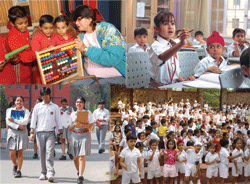 The summer of 2012 has been a season of setbacks for india’s 200,000 private primary-secondary schools which host 40 percent of the country’s school-going children. Although it’s an open secret that the minimal progress in terms of national development recorded by post-independence India is attributable to the efforts of private schools — rather than the dysfunctional 1.25 million government schools defined by crumbling infrastructure, chronic teacher absenteeism, multigrade teaching and obsolete syllabuses — which have educated and nurtured the nation’s productive middle class, a pall of fear about discriminatory regulation, populist intervention and dumbing down teaching-learning standards surrounds them. These fears have been accentuated this summer, after the Supreme Court’s judgement of April 12 in Society for Unaided Private Schools of Rajasthan vs. Union of India & Anr (2010), which substantially upheld the populist Right to Free and Compulsory Education Act, 2009 (aka RTE Act) enabling the Central and state governments to reserve a quota for poor neighbourhood children, even in wholly financially autonomous schools.
The summer of 2012 has been a season of setbacks for india’s 200,000 private primary-secondary schools which host 40 percent of the country’s school-going children. Although it’s an open secret that the minimal progress in terms of national development recorded by post-independence India is attributable to the efforts of private schools — rather than the dysfunctional 1.25 million government schools defined by crumbling infrastructure, chronic teacher absenteeism, multigrade teaching and obsolete syllabuses — which have educated and nurtured the nation’s productive middle class, a pall of fear about discriminatory regulation, populist intervention and dumbing down teaching-learning standards surrounds them. These fears have been accentuated this summer, after the Supreme Court’s judgement of April 12 in Society for Unaided Private Schools of Rajasthan vs. Union of India & Anr (2010), which substantially upheld the populist Right to Free and Compulsory Education Act, 2009 (aka RTE Act) enabling the Central and state governments to reserve a quota for poor neighbourhood children, even in wholly financially autonomous schools.
Under the Big Brother hybrid socialist model of development imposed upon the historically free enterprise subcontinent by Master Joe (aka Jawaharlal Nehru) and the Dynasty after independence, private schools — some with lineages stretching back over a century — have always been subject to the unwelcome attentions of an 18 million-strong neta-babu (politician-bureaucrat) kleptocracy which has emerged as free India’s most powerful and materially successful community. However, regulation was hitherto restricted to erecting roadblocks to private initiatives in primary-secondary education, dictation of broad curriculum norms and periodic visits by fault-finding, rents-seeking education department inspectors. Now for the first time in the history of Indian education, the RTE Act has imposed a government quota on private schools, unaided (i.e, financially independent of government) schools included.
As per s.12 (1) (c) of the RTE Act, which became law on April 1, 2010, all private schools — aided or unaided — are obliged to reserve 25 percent capacity in preschool (in integrated institutions) or class I, for children from socio-economically disadvantaged households in their (schools’) neighbourhood. Inevitably, the constitutional validity of this unprecedented government quota — even on wholly independent private schools — was challenged in the Supreme Court. However in a surprise 2-1 judgement delivered by a three-judge bench in Society for Unaided Private Schools of Rajasthan, the apex court upheld s.12 (1) (c) despite the government making it clear it will not pay tuition fees prescribed by the school, but the equivalent of the state governments’ expenditure per child in their own government schools. But the judges unanimously exempted minority and boarding schools from applicability of the section.
Unsurprisingly, the formulation, passage through Parliament and judicial endorsement of the RTE Act tantamount to “backdoor nationalisation”, has aroused widespread indignation within the community of private school promoters, many of whom have sunk life-savings into education institutions benchmarked with the best globally. Encouraged by the dissenting judgement of Justice K.S. Radhakrishnan who vigorously argued that s. 12 (1) (c) falls foul of several binding previous verdicts of the Supreme Court, particularly in the landmark T.M.A Pai Foundation (2002) and P.A. Inamdar (2005) cases which expanded the fundamental right conferred by Article 30 (1) of the Constitution upon all linguistic and religious minorities to “establish and administer education institutions of their choice” to all citizens, private school promoters tend to suspiciously view s.12 (1) (c) as the thin end of the wedge which will let in the Trojan horse of incremental government intervention into their institutions. And within this community which manages India’s top-ranked primary-secondary schools, attitudes against the sloppily drafted RTE Act and government interference in the management and administration of private schools are hardening.
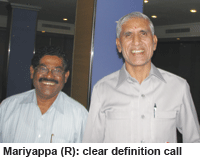 In the southern state of Karnataka over 1,800 schools with an aggregate enrolment of 1.08 million children banded under the umbrella of the Karnataka Unaided School Managements Association (KUSMA), called for a week’s mid-term closure of all member schools from July 16. KUSMA’s grievance is that under the Rules to implement the RTE Act — belatedly published by the state government on the eve of the academic year 2012-13 — it has failed to clearly define “minority schools” (exempted from applicability of s.12 (1) (c)), with some education ministry officials insisting that only primary-secondaries in which 75 percent of students and trustees belong to minority communities, are exempt from the s.12 (1) (c) obligation. Moreover, the state government has not addressed the issue of which groups comprise linguistic minorities. Although the KUSMA strike proved to be a damp squib and was called off after two days, its officials are determined to fight for the rights of private schools. “Contrary to media reports, our schools closure call was a success with over 1,800 member and other schools shutting down in protest. The protest was called off only after the government called us for negotiations. We have insisted upon a clear definition of linguistic and minority schools. If this demand is not met, we will resume the protest,” says A. Mariyappa, secretary of KUSMA.
In the southern state of Karnataka over 1,800 schools with an aggregate enrolment of 1.08 million children banded under the umbrella of the Karnataka Unaided School Managements Association (KUSMA), called for a week’s mid-term closure of all member schools from July 16. KUSMA’s grievance is that under the Rules to implement the RTE Act — belatedly published by the state government on the eve of the academic year 2012-13 — it has failed to clearly define “minority schools” (exempted from applicability of s.12 (1) (c)), with some education ministry officials insisting that only primary-secondaries in which 75 percent of students and trustees belong to minority communities, are exempt from the s.12 (1) (c) obligation. Moreover, the state government has not addressed the issue of which groups comprise linguistic minorities. Although the KUSMA strike proved to be a damp squib and was called off after two days, its officials are determined to fight for the rights of private schools. “Contrary to media reports, our schools closure call was a success with over 1,800 member and other schools shutting down in protest. The protest was called off only after the government called us for negotiations. We have insisted upon a clear definition of linguistic and minority schools. If this demand is not met, we will resume the protest,” says A. Mariyappa, secretary of KUSMA.
Banners of revolt against erosion of the autonomy of private schools are being unfurled in other parts of the country as well. On July 17, Jaipur-based educationist Damodar Goyal, president of the Society for Unaided Private Schools of Rajasthan — the association which filed the eponymous writ petition in the Supreme Court challenging s.12 (1) (c) and other provisions of the RTE Act — convened a meeting of 40-50 school promoters and trustees from across the country in Mumbai, inviting them to sign up as members of an association named National Foundation for Promotion and Protection of Private Education (NFPPPE). The foundation is in the process of registration and is likely to be formally launched in Mumbai on August 16.
 “In spite of the qualitative and quantitative growth of private, non-government education institutions as a result of public acceptance, these institutions, including private schools, have always been subject to government and public criticism and rigid regulation. Even though the landmark judgements of the Supreme Court in T.M.A Pai Foundation and P.A. Inamdar cases confirmed the fundamental right of private unaided educational institutions to establish, administer and manage themselves through transparent merit-based admission systems and reasonable fees, the Supreme Court nevertheless insists that private education institutions are “charitable” by definition. This classification abridges the right of private educationists to establish and administer educational institutions of their choice, as guaranteed by the Constitution and confirmed by the Supreme Court. For over six decades, non-government education institutions have tolerated a plethora of arbitrary and unfair regulations imposed upon them without protest, as they were not united and organised. Currently there are an estimated 200,000 private unaided schools in the country but their voice is unheard. The proposed NFPPPE will articulate their viewpoints and protect their interests,” says Goyal. A commerce graduate of Rajasthan University, Goyal began his career as a gems and jewellery appraiser and businessman. Since 1975 he has been involved with primary-secondary education, and is currently a Jaipur-based education consultant.
“In spite of the qualitative and quantitative growth of private, non-government education institutions as a result of public acceptance, these institutions, including private schools, have always been subject to government and public criticism and rigid regulation. Even though the landmark judgements of the Supreme Court in T.M.A Pai Foundation and P.A. Inamdar cases confirmed the fundamental right of private unaided educational institutions to establish, administer and manage themselves through transparent merit-based admission systems and reasonable fees, the Supreme Court nevertheless insists that private education institutions are “charitable” by definition. This classification abridges the right of private educationists to establish and administer educational institutions of their choice, as guaranteed by the Constitution and confirmed by the Supreme Court. For over six decades, non-government education institutions have tolerated a plethora of arbitrary and unfair regulations imposed upon them without protest, as they were not united and organised. Currently there are an estimated 200,000 private unaided schools in the country but their voice is unheard. The proposed NFPPPE will articulate their viewpoints and protect their interests,” says Goyal. A commerce graduate of Rajasthan University, Goyal began his career as a gems and jewellery appraiser and businessman. Since 1975 he has been involved with primary-secondary education, and is currently a Jaipur-based education consultant.
Certainly private school promoters and managements have cause for complaint and indignation. It is indisputable that but for their having maintained and improved teaching-learning standards in K-12 education in post-independence India, the 300 million great Indian middle class would not have come into existence. This productive class studiously avoids the country’s dysfunctional public/government school education system defined by vernacular instruction, chronic teacher absenteeism and a plethora of textbooks printing and teacher appointments and transfer rackets.
Currently 40 percent of India’s 220 million school-going children are enroled in the country’s 80,000 (or 200,000 according to the Union human resource development ministry’s classification system which classifies primary, upper primary, secondary and higher secondary sections within integrated schools as separate units) private aided (part-subsidised by state governments) and unaided (financially autonomous) primary-secondary schools. Even in rural India where per capita incomes are substantially lower, parents prefer to enroll their children in private schools. According to the Annual Status of Education Report (ASER) 2011, published by Pratham, India’s most respected education NGO, 25 percent of rural households send at least one child to a fees-levying private school rather than a free-of-charge government primary.
Yet instead of concentrating their attention on improving educational standards and learning outcomes in the country’s 1.25 million government schools, successive Central and state governments have felt it incumbent upon themselves to impose a rain of rules, regulations and conditions upon private schools, making them vulnerable to predatory education officials and inspectors, who periodically descend upon them to extort rents for infringement of fine-print rules.
According to knowledgeable monitors of Indian education and education consultants, the industry liberalisation and deregulation initiative of 1991 has completely bypassed the education sector, which has transformed into a quagmire for philanthropists, educationists and edupreneurs aspiring to combine business with corporate social responsibility. The vice-like grip over primary, secondary and higher education of the Central and state education bureaucracy, has made promotion of greenfield education institutions a formidable challenge which can only be met by the very determined and persistent. Notwithstanding the reality that education institutions are patently in the public interest, right from the stage of land acquisition, obtaining permissions from civic planners, charity commissioners, securing electricity and water connections, and obtaining the all-important NOC (no objection certificate), private education promoters are obliged to make compulsory pay-offs at every stage. This opaque regulatory regime defined by wide discretionary powers in government officials, gives politicians and government cronies an inside track advantage which is why failed and retired politicians with suspect credentials have emerged as eminent educationists across the country.
Moreover it’s pertinent to note that regulatory harassment of privately promoted education institutions continues even after they become operational. With the Sixth Pay Commission raising the monthly remuneration of government primary school teachers to Rs.23,000 per month (in Delhi) at the entry level, private schools have had to raise teachers salaries substantially, if not follow suit. But several state governments pressured by the subsidies-addicted middle class have imposed ceilings on tuition fees by appointing fees monitoring committees following the Supreme Court’s judgement in the Islamic Academy case (2003), which diluted the freedom given to private education institutions to fix their own reasonable tuition fees by the court in the T.M.A Pai Foundation case (2002). Even as private unaided schools are being squeezed between rising teachers’ pay and establishment overheads and controlled tuition fees, the RTE Act has imposed the 25 percent poor neighbourhood children quota upon them. “It’s a situation which forces private school managements to choose between crossing the laxman rekha into corruption — because the demand for admission into the best private schools is always greater than available capacity — or suffer institutional depreciation,” says the principal of a Delhi-based top-ranked school who requested anonymity.
Persistent over-regulation, government meddling and micro management of the country’s 200,000 private schools and now the imposition by the RTE Act of the 25 percent primary school government quota, has proved to be the last straw for independent schools. To them, Goyal’s proposal to launch the NFPPPE has come as a welcome clarion call to unite and establish a powerful private schools lobby determined to make their voices and viewpoints heard in government, the establishment and public forums.
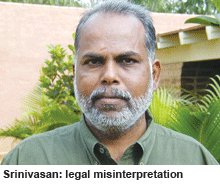 “There is widespread and irrational prejudice against private education providers in Indian society because the Constitution of India — which obliges the State, i.e government, to provide free and compulsory education to all children — has been misinterpreted by the courts and public, to force private educationists to provide schooling as charity. The world over it’s normative for government to provide free education with private educators having the freedom to run their schools and colleges as businesses or charities. Moreover, people should also have the freedom to choose whether they want charitable or professionally-dispensed education for their children. I welcome the promotion of NFPPPE and hope it will educate public opinion on this important subject,” says M. Srinivasan, an alumnus of Mysore and Connecticut universities and founder-principal of the Gifted Education and Research (GEAR) Innovative International School, Bangalore and president of the Managements of Independent CBSE Schools of Karnataka.
“There is widespread and irrational prejudice against private education providers in Indian society because the Constitution of India — which obliges the State, i.e government, to provide free and compulsory education to all children — has been misinterpreted by the courts and public, to force private educationists to provide schooling as charity. The world over it’s normative for government to provide free education with private educators having the freedom to run their schools and colleges as businesses or charities. Moreover, people should also have the freedom to choose whether they want charitable or professionally-dispensed education for their children. I welcome the promotion of NFPPPE and hope it will educate public opinion on this important subject,” says M. Srinivasan, an alumnus of Mysore and Connecticut universities and founder-principal of the Gifted Education and Research (GEAR) Innovative International School, Bangalore and president of the Managements of Independent CBSE Schools of Karnataka.
Indeed bona fide educationists are fed up to the back teeth with the worst practices of discredited licence-permit-quota raj migrating from Indian industry into school and higher education. Therefore a rapidly growing number of big names are rallying behind the NFPPPE banner of revolt.
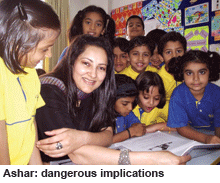 “With private education institutions being the focus of attention of the HRD ministry and education officials, there is no incentive for government schools to improve, even as controls and impositions on private schools are multiplying, with s.12 (1) (c) being the latest example. As a result, the spark within genuine educationists and idealists to promote innovative new schools is being snuffed out even as the wrong sort of people, ready to cut corners, are entering this sensitive vocation. The long-term implications of these developments are very dangerous for children and the country. I hope one of the top priorities of NFPPPE will be to educate parents who often invite government interference in private schools, about this,” says Lina Ashar an alumna of Melbourne University, Australia and promoter-chairperson of the Mumbai-based Kangaroo Kids Education Pvt. Ltd, a company which has promoted 55 Kangaroo Kids preschools and 18 Billabong primary-secondaries country-wide under the owned and franchise models.
“With private education institutions being the focus of attention of the HRD ministry and education officials, there is no incentive for government schools to improve, even as controls and impositions on private schools are multiplying, with s.12 (1) (c) being the latest example. As a result, the spark within genuine educationists and idealists to promote innovative new schools is being snuffed out even as the wrong sort of people, ready to cut corners, are entering this sensitive vocation. The long-term implications of these developments are very dangerous for children and the country. I hope one of the top priorities of NFPPPE will be to educate parents who often invite government interference in private schools, about this,” says Lina Ashar an alumna of Melbourne University, Australia and promoter-chairperson of the Mumbai-based Kangaroo Kids Education Pvt. Ltd, a company which has promoted 55 Kangaroo Kids preschools and 18 Billabong primary-secondaries country-wide under the owned and franchise models.
Ashar’s advice to the middle class parents’ community is timely. Despite avoiding government schools like the plague and moving heaven and earth to enroll their children in the country’s much-too-few private schools, and despite the reality that tuition fees in India’s private schools — new genre international schools included — are arguably the lowest worldwide, the subsidies-addicted middle class is quick to invite government intervention when tuition fees are increased — inevitable in an inflationary economy. Curiously, middle class parents seem oblivious that government intervention in school administration is to invite creeping corruption, for which contemporary India has acquired a globally infamous reputation.
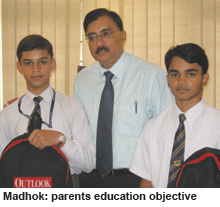 Fortunately, despite the efforts of organisations such as the Delhi-based All-India Parents Association which has been consistently and myopically advocating government regulation of tuition fees in private schools, there is growing awareness that government interference with the administration of private schools is the beginning of dilution of academic standards which they wish for their children. “The problem is that most middle class — especially small town — parents have never received high quality education and therefore don’t value it sufficiently. They can’t seem to grasp the contradiction in the government prescribing Sixth Pay Commission remuneration for private school teachers and at the same time holding down tuition fees. One of NFPPPE’s objectives will be to educate parents that cheap education is bad education. In our schools, parents are beginning to accept this argument and tuition fee increases are bilaterally negotiated by school managements and Parent-Teacher Associations,” says Deepak Madhok, chairman of the Varanasi-based Sunbeam Group of nine owned and nine franchised English-medium primary-secondaries in Uttar Pradesh.
Fortunately, despite the efforts of organisations such as the Delhi-based All-India Parents Association which has been consistently and myopically advocating government regulation of tuition fees in private schools, there is growing awareness that government interference with the administration of private schools is the beginning of dilution of academic standards which they wish for their children. “The problem is that most middle class — especially small town — parents have never received high quality education and therefore don’t value it sufficiently. They can’t seem to grasp the contradiction in the government prescribing Sixth Pay Commission remuneration for private school teachers and at the same time holding down tuition fees. One of NFPPPE’s objectives will be to educate parents that cheap education is bad education. In our schools, parents are beginning to accept this argument and tuition fee increases are bilaterally negotiated by school managements and Parent-Teacher Associations,” says Deepak Madhok, chairman of the Varanasi-based Sunbeam Group of nine owned and nine franchised English-medium primary-secondaries in Uttar Pradesh.
Yet incremental harassment of private school promoters and managements by the Central and state governments for over six decades has reached a tipping point beyond educating government, parental and public opinion about the legitimate role and space of private schools in the education system. Currently, the dominant sentiment within the community of educationists, educators and philanthropists is of militant indignation. “The basic requirements of life are food, clothing, shelter, healthcare and education. All these requirements are permitted to be provided commercially, except education which is compulsorily a charity. Even the majority judgement in the T.M.A Pai Foundation case (2002) which substantially restored the autonomy of private education institutions, reiterated that “education is a recognised head of charity”. Moreover when in the P.A. Inamdar case (2005), a seven-judge bench of the Supreme Court held that reserved quotas cannot be imposed upon unaided private education institutions, the UPA-I government enacted the 93rd Constitution Amendment which overrules this judgement. It’s now abundantly clear there is blatant discrimination against private education providers. Therefore the time has come to vigorously challenge this discrimination in the courts, the media and forums of public opinion through NFPPPE,” says Goyal.
Accordingly, Goyal who addressed a full-house meeting in Mumbai’s Westin Hotel in Andheri, on July 18, is visiting all major education hubs to mobilise and unite private school promoters, trustees and managements to build a war-chest for a prolonged battle in the law courts and the court of public opinion. “The recent writ petition (Society for Unaided Private Schools of Rajasthan) which we lost, is the beginning of prolonged battles in the courts to carve out a legitimate space for private education institutions and providers,” he says.
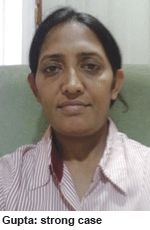 The response to Goyal’s crusade has been positive with the brainstorming conclaves of school promoters, trustees and managements receiving enthusiastic approval. Moreover not a few top-flight legal luminaries believe that private education providers have received step-motherly treatment from the Central and state governments and higher judiciary, and that they have a strong case for institutional autonomy. “We have already filed a petition under Article 143 (of the Constitution) in the Supreme Court praying for review of the apex court’s majority judgement in the Society for Unaided Private Schools of Rajasthan vs. Union of India which upheld reservation of a government quota in private schools under s.12 (1) (c) of the RTE Act. The thrust of our case is that the three-judge bench which adjudicated the writ cannot overrule the verdict of the 11-judge bench which wrote the T.M.A Pai Foundation (2002) judgement. I believe we have a very strong case,” says Shobha Gupta, senior advocate-on-record who drafted the writ petition in the Society for Private Unaided Schools of Rajasthan case.
The response to Goyal’s crusade has been positive with the brainstorming conclaves of school promoters, trustees and managements receiving enthusiastic approval. Moreover not a few top-flight legal luminaries believe that private education providers have received step-motherly treatment from the Central and state governments and higher judiciary, and that they have a strong case for institutional autonomy. “We have already filed a petition under Article 143 (of the Constitution) in the Supreme Court praying for review of the apex court’s majority judgement in the Society for Unaided Private Schools of Rajasthan vs. Union of India which upheld reservation of a government quota in private schools under s.12 (1) (c) of the RTE Act. The thrust of our case is that the three-judge bench which adjudicated the writ cannot overrule the verdict of the 11-judge bench which wrote the T.M.A Pai Foundation (2002) judgement. I believe we have a very strong case,” says Shobha Gupta, senior advocate-on-record who drafted the writ petition in the Society for Private Unaided Schools of Rajasthan case.
The review petition likely to be admitted this month apart, Gupta believes private schools also have good grounds to challenge the constitutional validity of the 93rd Amendment which overruled the seven-judge-bench verdict of the Supreme Court in P.A. Inamdar vs. State of Maharashtra (2005), in which it was held that the State cannot impose a reserved quota upon private unaided education institutions, and inserted Article 15(5) into the Constitution permitting it to do so. According to her, the specific issue of whether government can impose a quota upon private unaided education institutions was not raised in Ashok Thakur vs Union of India (2008) which upheld the constitutionality of Article 15(5), although Justice Dalveer Bhandari observed in passing that it cannot be imposed on unaided educational institutions.
“Nowhere in the Constitution of India is it written that education has necessarily to be a charitable occupation. Numerous judgements of the courts have held that under the Consumer Protection Act the student is a consumer, and that education institutions are an industry under industrial legislation. Therefore there’s no logic in labeling school education as compulsorily charitable when provision of food, clothing, shelter and healthcare are not so classified. Private unaided schools have a legitimate grievance about being classified as compulsorily charitable and can — and should — challenge this classification,” says Gupta.
Against this backdrop of open discrimination against the country’s 200,000 private schools, establishment of NFPPPE was long overdue. Perhaps the strongest argument for the promotion and protection of private schools — aided and unaided — is that although they constitute a mere one-fifth of the country’s 1.30 million primary-secondaries, they school 40 percent of India’s children and are overwhelmingly pref-erred by all segments of society, as testified by the mad rush for admissions at the start of every academic year. Even the country’s poorest households prefer to enroll their children in the estimated 400,000-1.5 million unrecognised, fees-levying private budget schools — rather than in free-of-charge government schools — which have mushroomed countrywide and are now threatened with forced closure under s. 19 of the RTE Act.
Clearly, private schools and education institutions have played a major role in educating and nurturing India’s 300 million middle class which has led the national development effort, and have carved out a legitimate space of honour for themselves within the country’s education system.
Great and promising schools and colleges established and administered by visionary philanthropists, educationists and edupreneurs for developing the nation’s human capital deserve respect and autonomy from populist government intervention. Therefore the National Foundation for the Promotion and Protection of Private Education deserves the acclamation and support of all right-thinking members of society. Especially from the middle class and intelligentsia who have availed — and continue to avail — the world’s cheapest private education.
















Add comment